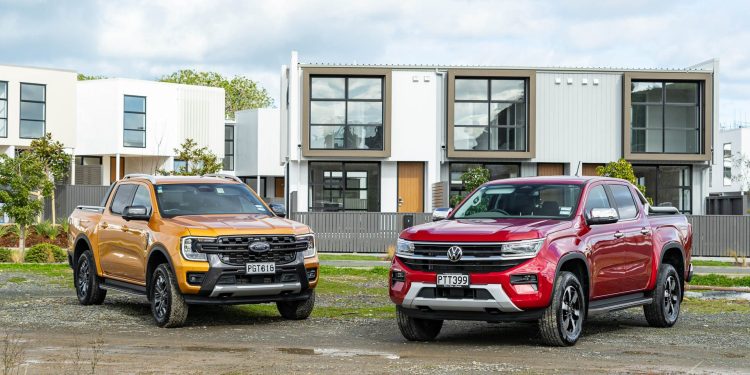Ford Ranger Wildtrak vs VW Amarok Style comparison review
Words: Kyle Cassidy | Photos: Isaac Western
According to Norse mythology, Ragnarok is an end of days event where gods clash in an apocalyptic war. Back on Earth, Rang-a-rok is the coming together of two ute titans, Ranger and Amarok, that are now all but one and the same. Here we compare and contrast the two.
Ford and Volkswagen seem unlikely bedfellows but strategic alliances where brands are less likely to step on one another’s toes in the marketplace is most logical.
We talk of the tie up between these two auto giants that sees them supply one another with common hardware to be re-wrapped and presented as different models.
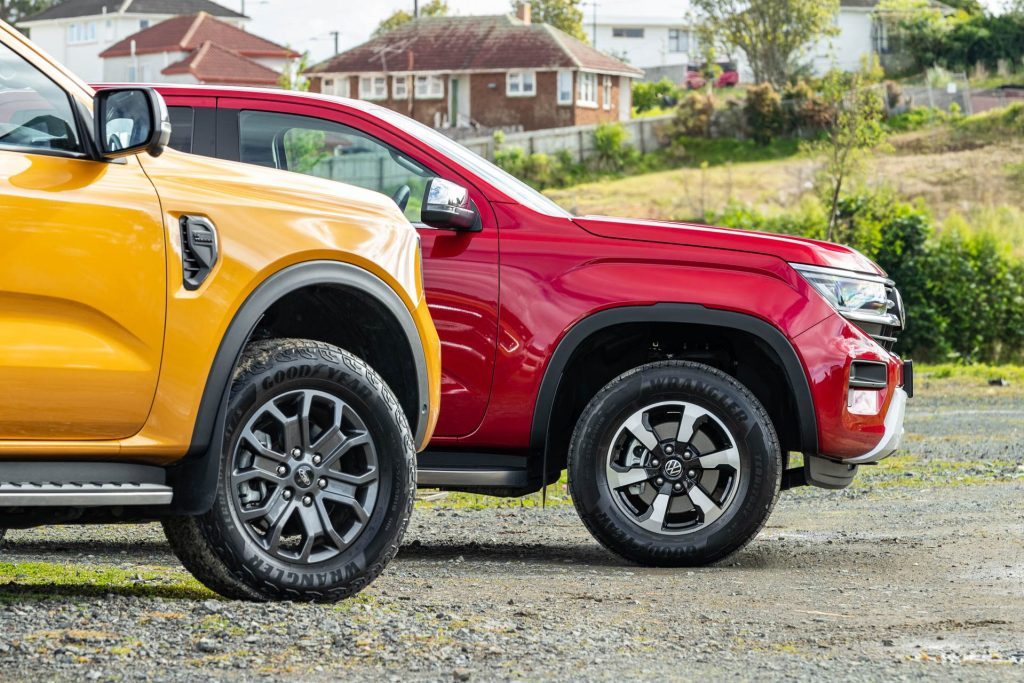
So far the co-op has birthed a couple of van derivatives and there’s the Europe-only Explorer with ID.4 bits beneath it. For New Zealanders, the best known co-lab is the Ranger and Amarok, Ford supplying the bones for this, the second-gen Volkswagen pick-up.
In a nutshell, that means the chassis, electrical architecture and powertrain are Ford developed (though Volkswagen did have members on the engineering team from the get-go of the new Ranger platform) with Volkswagen responsible for the look and feel of its latest Amarok.
Dimensions are all but the same while the sheetmetal is unique; the glasshouse and mirrors being one of the few things that the trucks share on the outside.
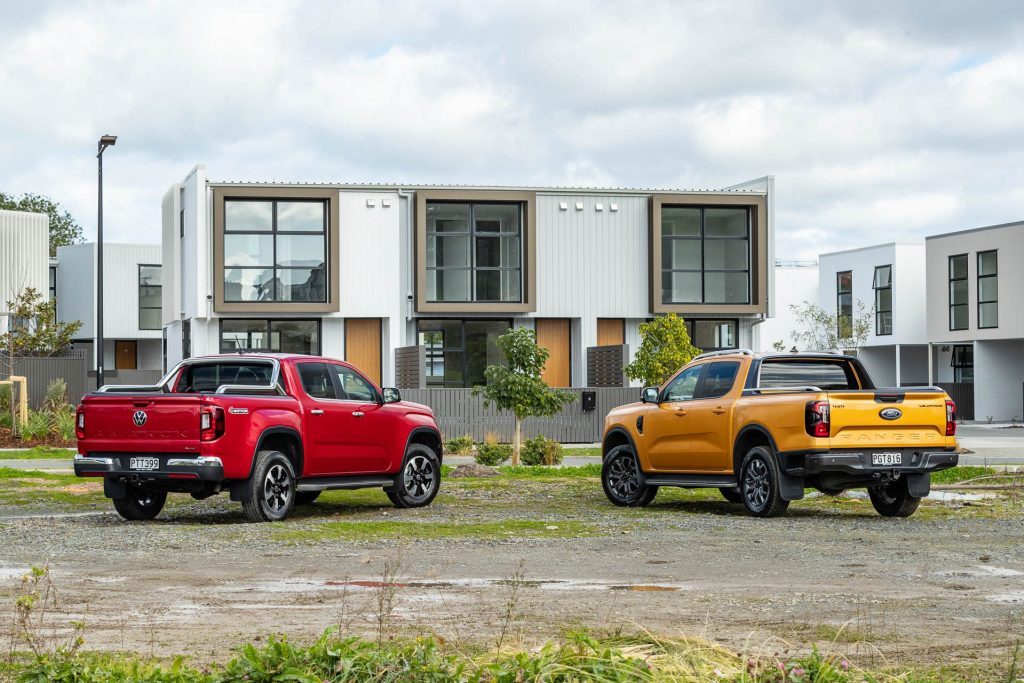
Here, they are marketed a bit differently, Ford with a broader range of offerings, and more with a genuine work ute bent. Amarok is a line-up of just four variants, only one you’d dub a work ute.
This is the Style, the mid-spec variant that lines up on price with the Ranger Wildtrak. Here we thought we’d run the tape over them to see what’s the same and what’s different.
Super Stylin’
The $75,000 Style uses the 2.0-litre bi-turbo four cylinder with 154kW and 500Nm, hooked up to a ten-speed auto. It has a part-time 4×4 driveline, various drive modes and a locking rear diff. It’s the most fuel efficient in the Amarok range with figures of 8.3L/100km, 218g/km and a CC fee of $4485.

Most of the above goes for the Ranger too, given they share the same powertrain, except while the WT’s consumption is listed at 8.3L/100km, its CO2 output is 231g/km (rightcar.co.nz), and so it cops a higher fee of $5232.
The anomaly we can only put down to the WT not having idle/stop, which the Amarok does.
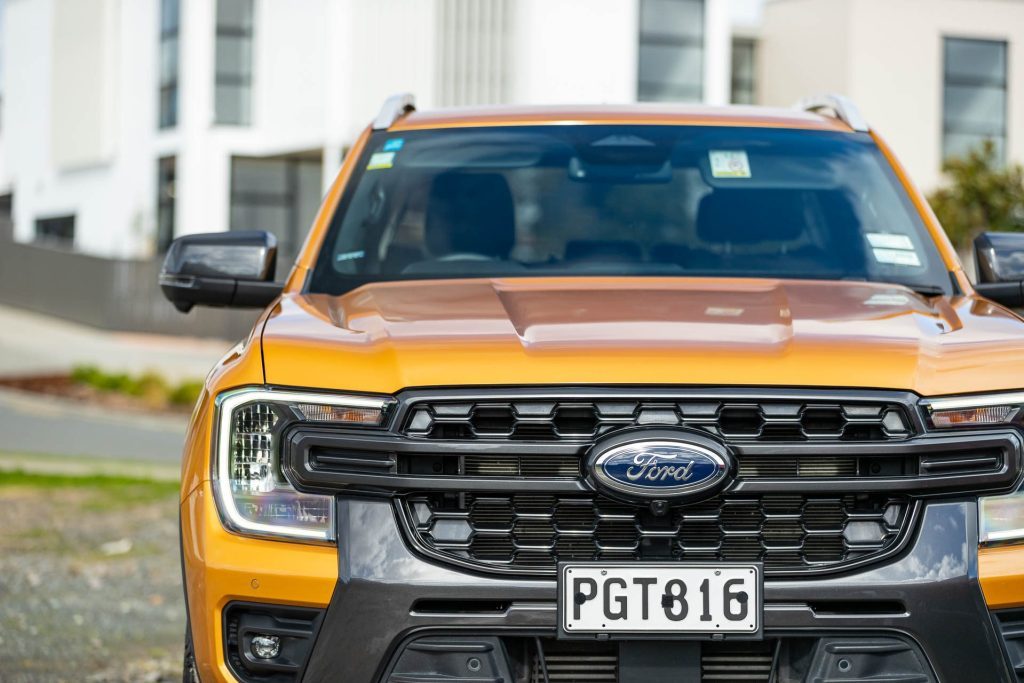
While buyers of the previous Amarok favoured the V6 model, this Style variant might tempt a few into downsizing. You really don’t miss out on much in everyday driving, the bi-turbo quick to dole out its torque, and the ten-speed auto is good at maximising those outputs.
It’s not as smooth as the V6, however, and is a bit rowdier in that clattering, four-pot oiler way. While tow limits are the same, both V6 and bi-turbo capable of hauling 3500kg braked loads, the additional low-rev slug of the larger motor would no doubt be appreciated.
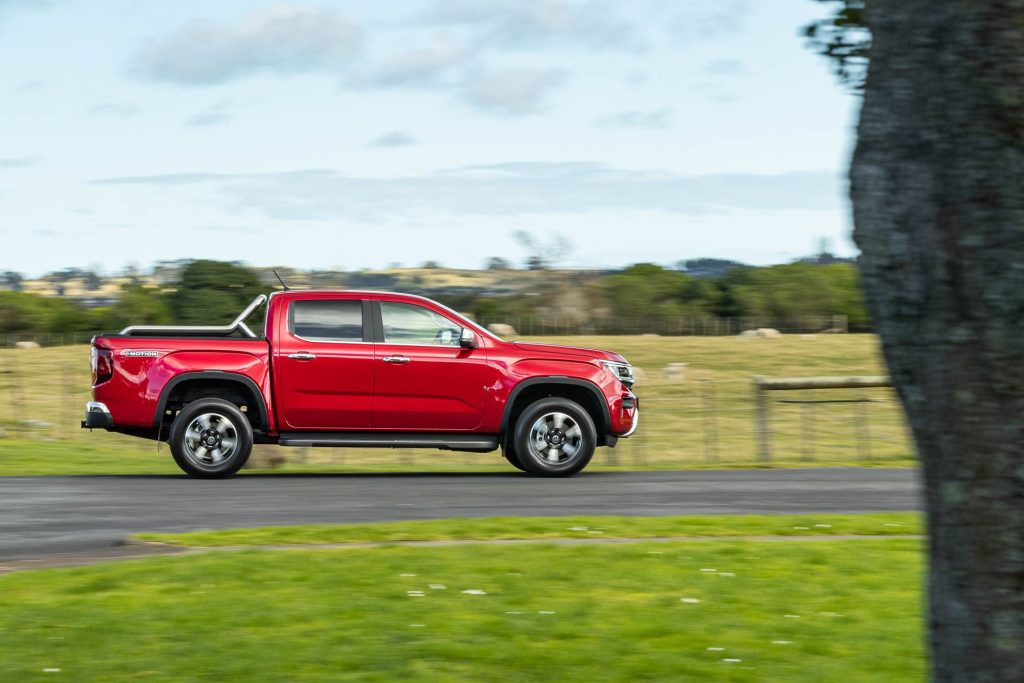
Utes are well specified these days, the Style particularly so with all the safety kit (both active and passive, including nine airbags) leather and suede-like trimmings, powered driver’s seat with heaters, wireless chargepad, a smart key and a reversing camera.
Wildtrak is $75,990 and matches everything on the Style’s spec sheet (save for the matrix-style LED lights of the VW) but adds things like auto park assist, a 360-degree camera, lane centring for the active cruise and powered seats on both sides of the cabin.
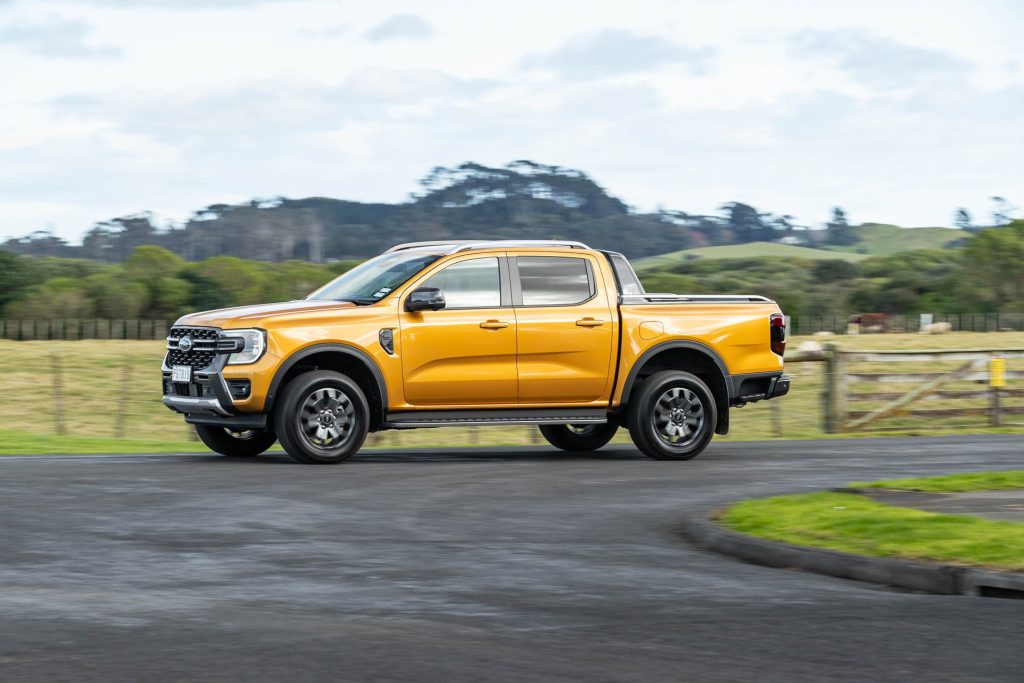
Both have 15,000km/12-month service intervals (under ‘normal’ conditions), although VW offers fixed price service plans (3 yrs/45,000km $1950, which you can add to the finance deal). Both have the same 5yr/150,000km cover.
Styled differently
While the dimensions are similar, each wears a unique look, the Amarok with a familiar VW front end, a sports bar atop the wellside and AMAROK stamped across the tailgate.
The Ranger is unmissable front on with its big light signature and bold upright grille. Though they have a similar stance, the untrained eye would not pick them as sharing common lineage.
They are even more divergent inside, Volkswagen setting a classier tone with its mix of colours and surface treatments. It’s an all black affair inside Ranger. The Amarok seats have a better form and fit, the superior padding appreciable.

However the raised bolster on the squab makes it that bit more difficult to jump on in, where you slide across onto the Ranger’s seat. The Amarok also has its own steering wheel with a superior feeling leather wrap. They’ve relocated the indicator to the left too.
This pair has more soft surfaces in the cabin than your average truck, but there are hard wearing plastics in the right places. Both infotainment systems are easy enough to navigate your way through, and we like Ford’s use of hard buttons for the ventilation system.
There’s just enough leg room in the rear of each for adults while Isofix points help secure the little ones. The Ford provides USB plugs in the back (C and A) while there’s just a 12V socket in the VW.
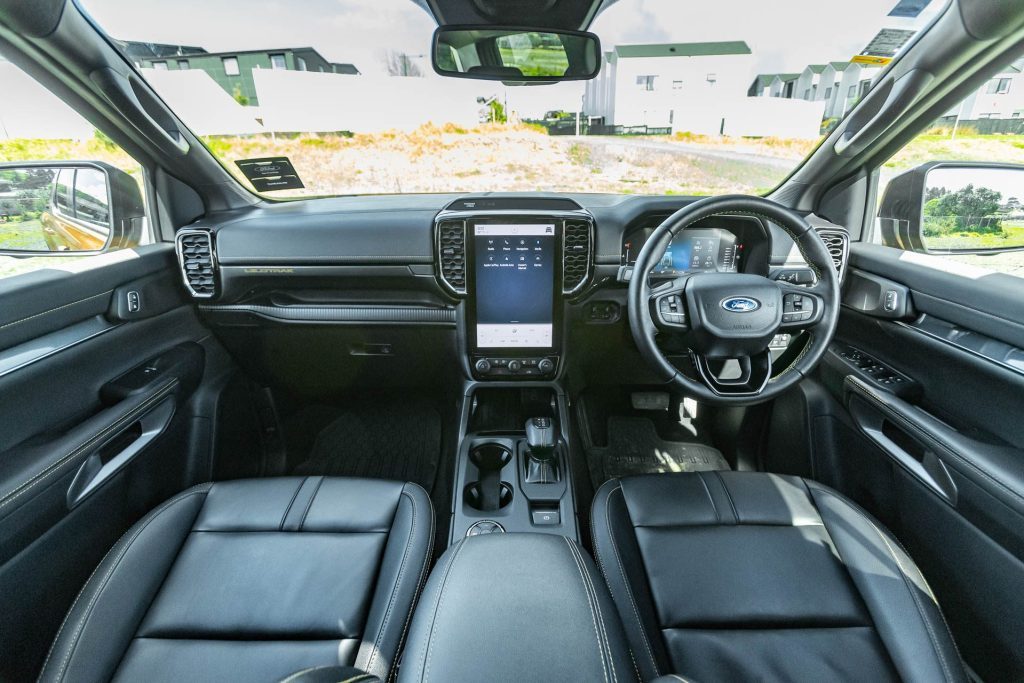
Both squabs lift up for when you want to load stuff in the back.
Both capable
VW wanted the tray of its new truck to accept a pallet between the arches, just like the old one, and so the Ranger also benefits by gaining a wider bed.
Tray liners are standard, but are slightly different designs that sees the Amarok being a smidge wider at the tailgate and longer at the floor (though not by much) while they are equal between the arches. Both have bed lights and fixed tie down points but Wildtrak adds a row of moveable rings along the top as well.
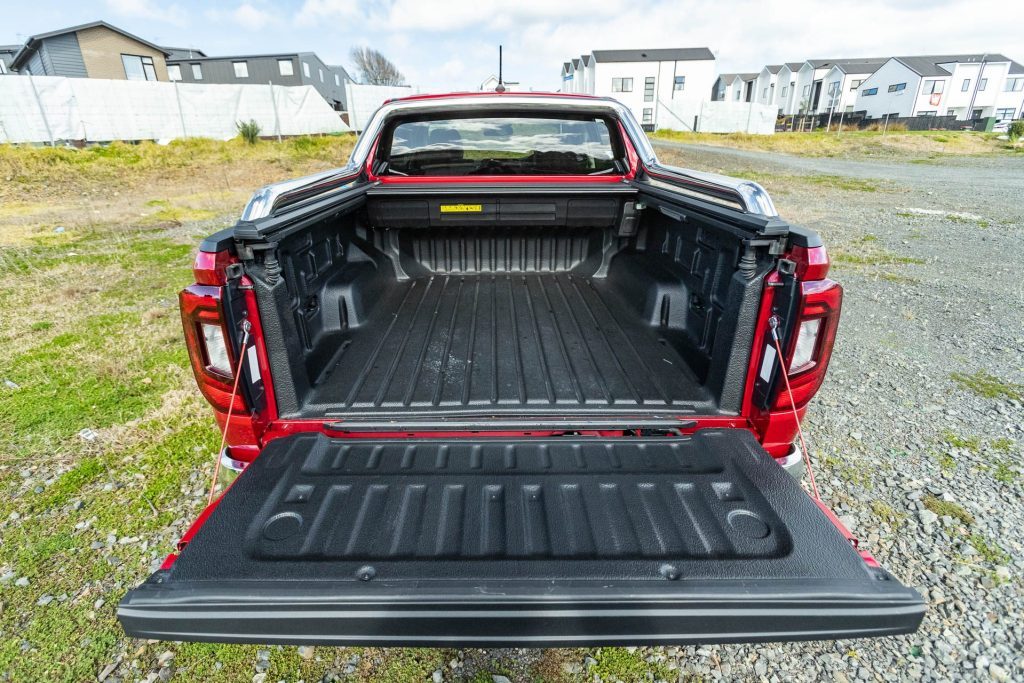
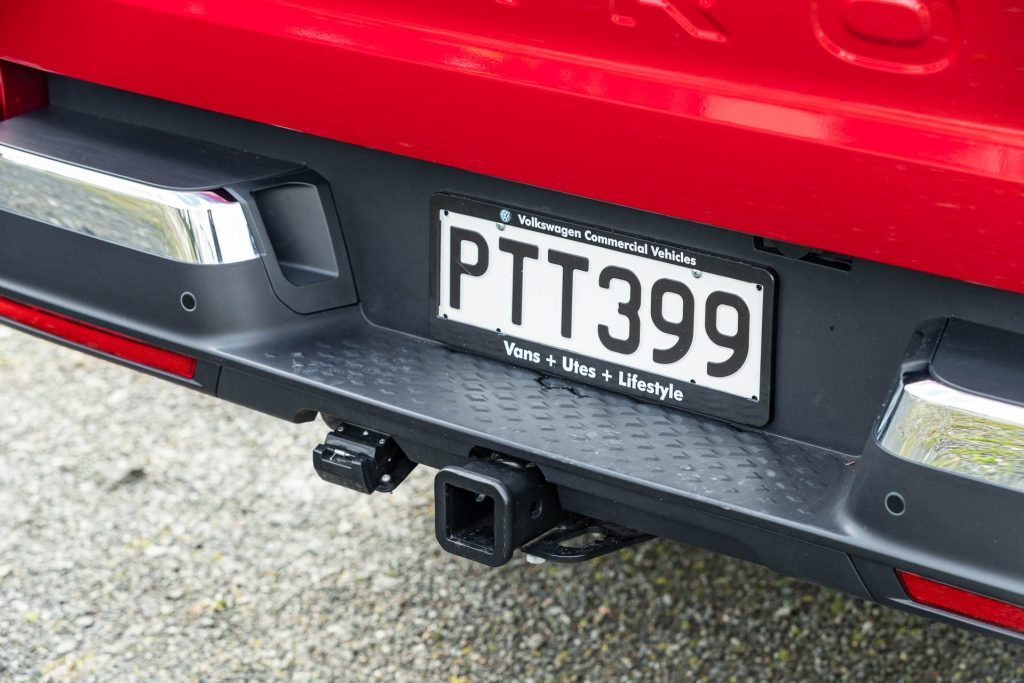
And it has a powered, roller shutter (with remote key activation) while a tonneau is a cost extra for Amarok.
The Ranger’s bed step in the bumper is a blessing when trying to retrieve things from the tray; you have to balance on the rear wheel of the Amarok while the sports bar along the top of the wellside gets in the way. Both tailgates are easy to lift and also lock via the key fob.
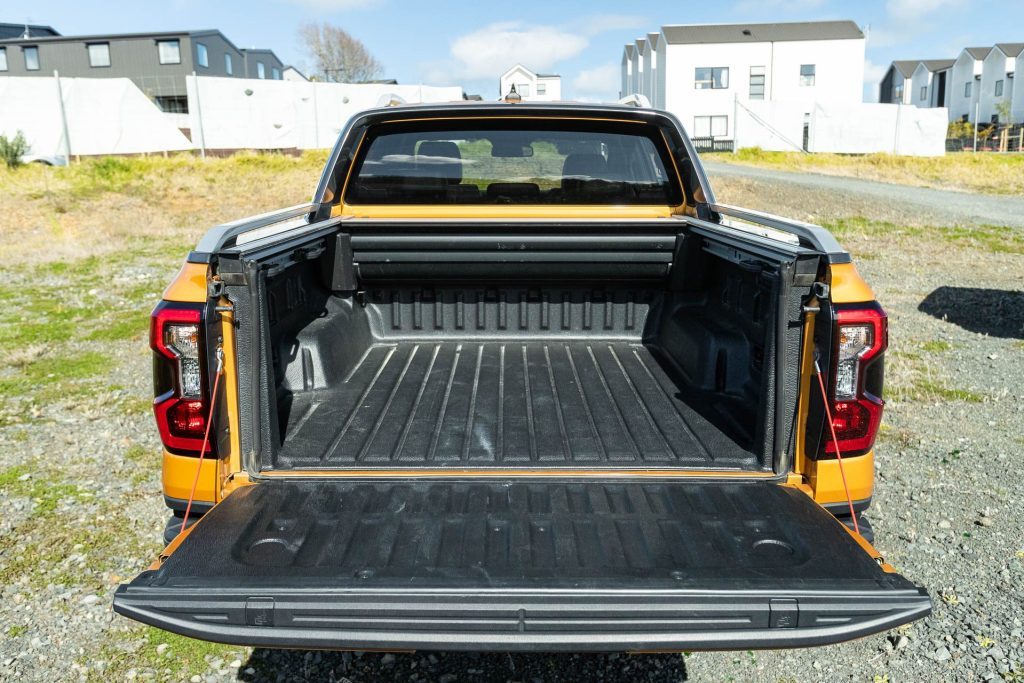

Each comes with a towbar from the factory with the same 3.5 tonne rating and 350kg down weight while Wildtrak also gets an integrated trailer brake control system.
Payload is stated as 945kg for the Amarok while Ford has become KGB-like with specifics; there are few dimensions and weights on its local website.
Ranging and Roking
There’s little between them when it comes to dynamics. The main difference is the tyres they wear; the Amarok with more road-oriented H/T (highway terrain) rubber, the Wildtrak with Wrangler A/Ts (all terrain) complete with bigger tread blocks.
The Amarok therefore has less of a tendency to squeal in the turns, and holds onto its cornering line longer. It also has a better stopping distance. The tune of the steering assistance is the other difference.
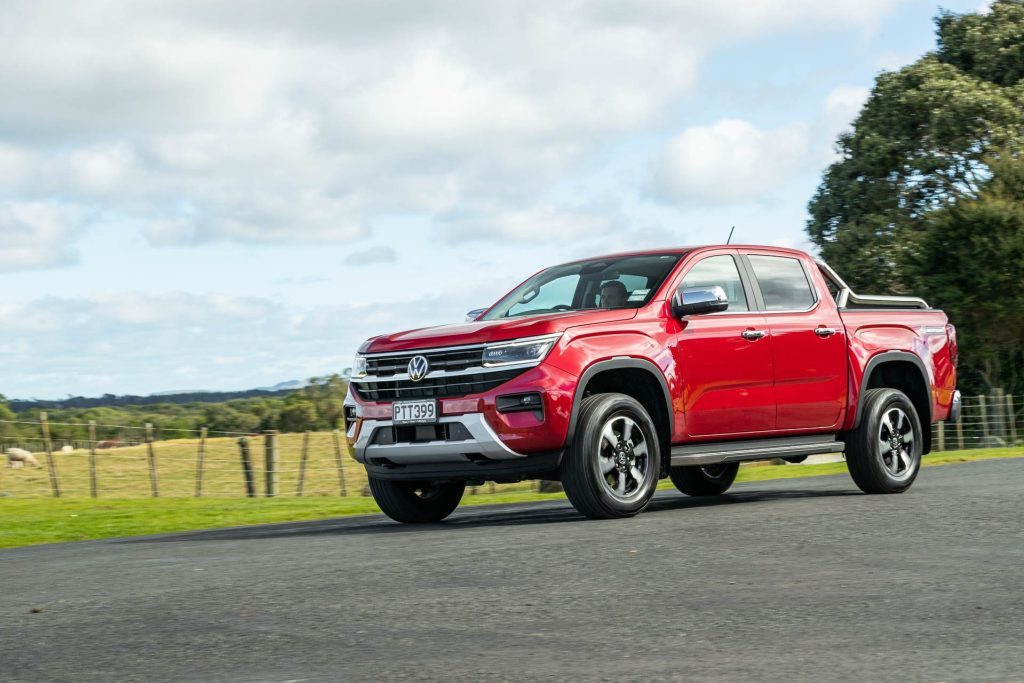
The Ranger has a lighter feel at the helm, good for round town manoeuvres but it is a touch over-assisted in the bends. Sometimes you need to make the odd midcorner adjustment while the Amarok gives more resistance, making it feel more accurate and connected.
Both turn with relative ease, each with the same steering ratio (3.25 turns lock-to-lock) and they flow through the curves sweetly.
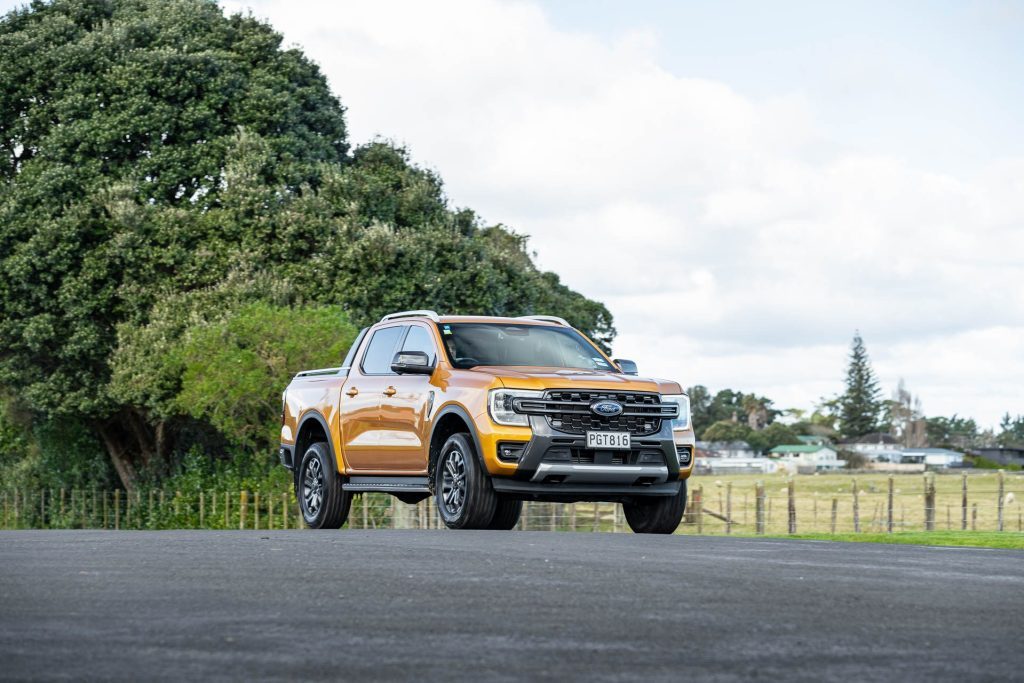
Otherwise there is not much between them, the ride quality similar and rather decent for this genre of pick-up with not much in the way of shimmy and shake over the bumps, the rear ends secure. That said, the V6 Panamerica and Aventura ride better again with their comfort suspension tunes.
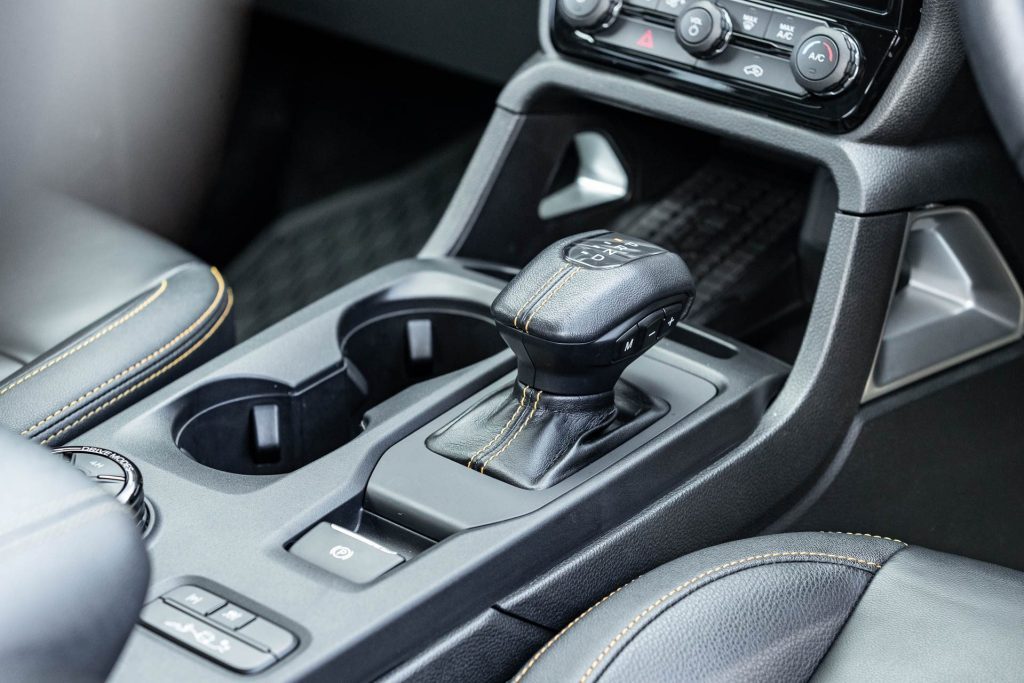
Round town, the 2.0 diesel is quick to deliver its torque, the autos change rapidly and smoothly. We reckon the Ford was slightly more willing to change down when adding throttle, the VW’s pulling the gear a little longer before giving in.
Against the clock the Ranger was 0.1sec quicker, but probably because it had done more miles; diesels tend to get quicker as they run in. Each has well tuned safety minders, and the lane keeping can be switched off when it gets annoying.
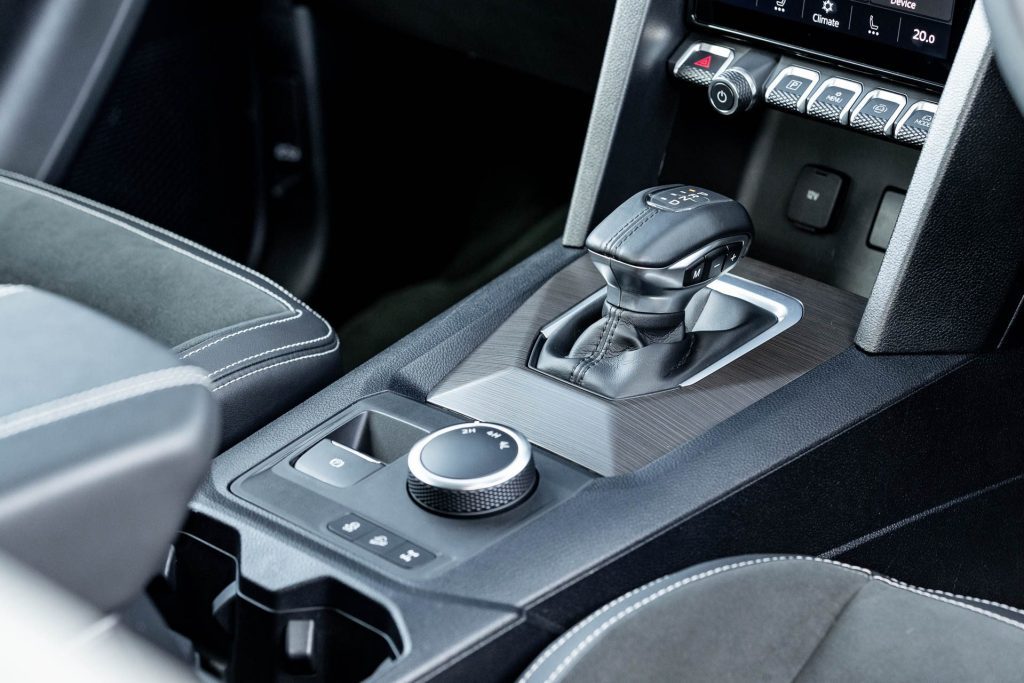
Both have equally large turning circles of 12m plus, but the addition of the surround view camera in the Wildtrak makes manoeuvring easier. This feature is only available on V6 Amaroks.
Same-same but different?
There’s little between these, as you’d expect. Given similar pricing, it will come down to which badge you prefer to look at on the steering wheel. Or maybe the overall look of the ute.
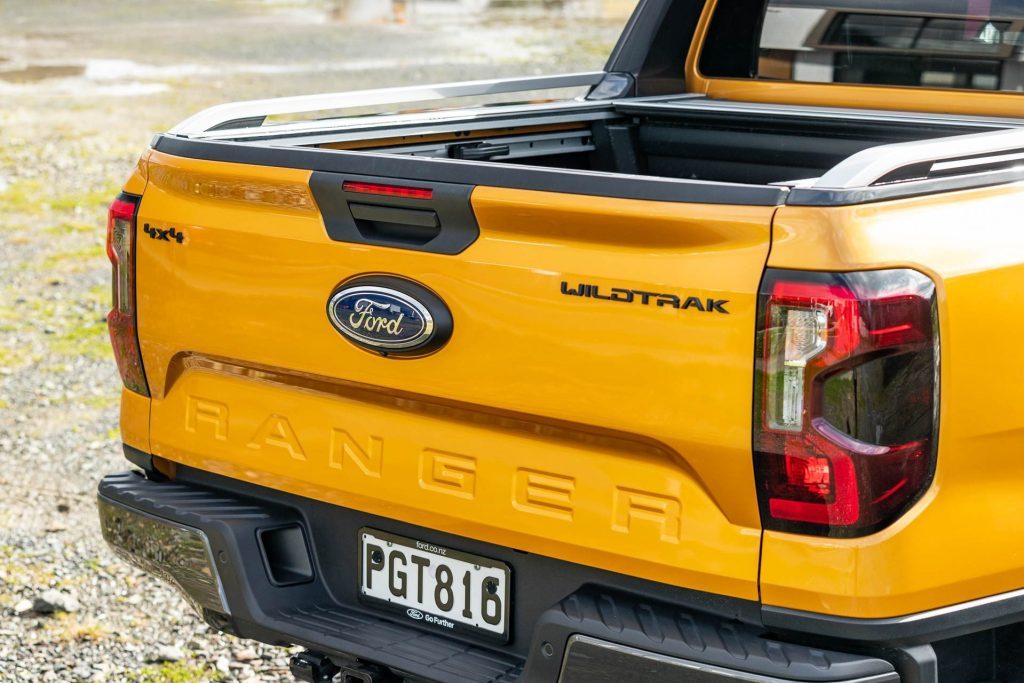
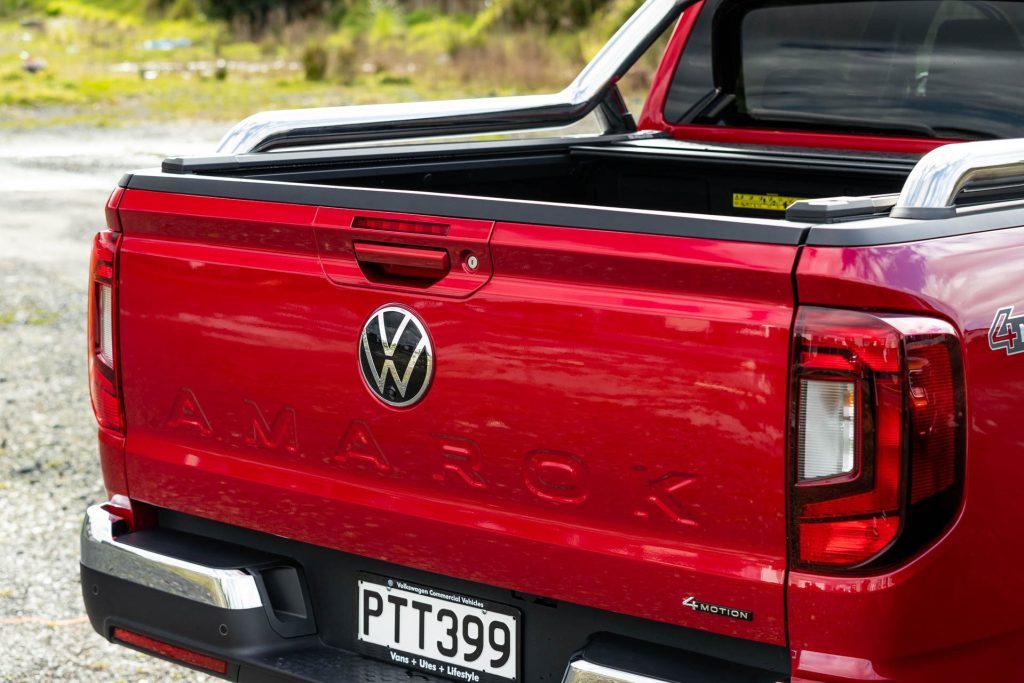
The Wildtrak is better specified for the price, perhaps giving it a slight edge if you’re after the best value.
| Model | Ford Ranger Wildtrak Bi-Turbo |
| Price | $75,990 |
| Clean Car Discount | Fee – $5,232 |
| Engine | 1996cc, IL4, TDI |
| Power | 154kW@3750rpm |
| Torque | 500Nm@1750-2000rpm |
| Drivetrain | 10-speed auto / switchable 4×4 |
| Fuel Use | 8.1L/100km |
| C02 Output | 231g/km |
| 0-100km/h | 9.32sec |
| 80-120km/h | 7.10sec (204m) |
| 100-0km/h | 38.95m |
| Stability systems | ABS, ESP |
| Safety | AEB, ACC, BSM, LDW, RCTA, ALK, AHB |
| L/W/H | 5370 / 1918 / 1883mm |
| Tow rating | 750kg (3500kg braked) |
| Service intervals | 12 months/15,000km |
| Fuel Capacity | 80L |
| Warranty | 5 years/150,000km |
| ANCAP rating | 5 stars (2022) |
| Weight | 2271kg |
| Model | Volkswagen Amarok Style |
| Price | $75,000 |
| Clean Car Discount | Fee – $4,485 |
| Engine | 1996cc, IL4, TDI |
| Power | 154kW@3750rpm |
| Torque | 500Nm@1750-2000rpm |
| Drivetrain | 10-speed auto / switchable 4×4 |
| Fuel Use | 8.31L/100km |
| C02 Output | 218g/km |
| 0-100km/h | 9.41sec |
| 80-120km/h | 7.23sec (206m) |
| 100-0km/h | 36.98m |
| Stability systems | ABS, ESP |
| Safety | AEB, ACC, BSM, LDW, RCTA, ALK, AHB |
| L/W/H | 5362 / 1917 / 1871mm |
| Tow rating | 750kg (3500kg braked) |
| Service intervals | 12 months/15,000km |
| Servicing Plan | $1950, 3 yrs / 45,000km |
| Warranty | 5 years/150,000km |
| ANCAP rating | 5 stars (2022) |
| Weight | 2335kg (claimed) |


